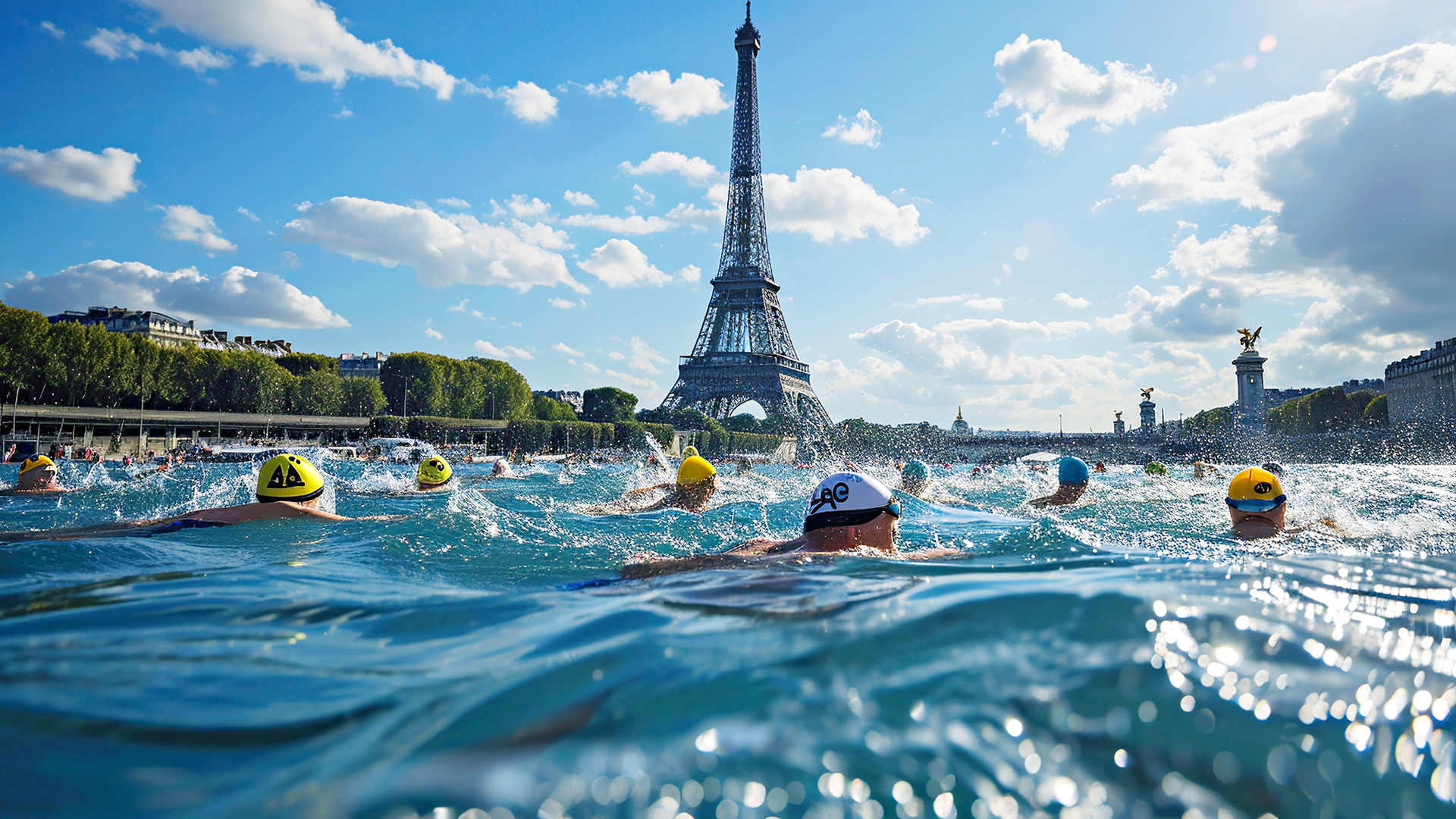
by Sophia Adamou — Sep 30, 2024
In December 2015 Paris hosted the historic UN Climate Change Conference that produced the Paris Climate Agreement. Adopted and signed by 196 states, this legally binding agreement was the beginning of a serious step change in global cooperation and efforts to reduce carbon emissions and tackle climate change.
Paris is breaking ground again, honouring the ambitions of that agreement, by hosting the first Olympic games run to a strict carbon budget. France’s capital city has set itself a challenge that, in total, the 2024 Olympic Games will emit no more than 1.58 million metric tonnes of CO2-equivalent. To put this in perspective, that is half the carbon footprint of London 2012 or Rio 2016. If Paris indeed meets this target, then remarkably, emissions will be lower than for Tokyo 2020, which had the distinction of no overseas spectators attending whatsoever, due to Covid-19 travel restrictions. Currently, Paris is on course to deliver the most environmentally friendly Olympics ever. This no doubt helped them to win the 2024 bid in the first place. Since 2020 the International Olympic Committee have had a sustainability agenda that requires the Olympic Games to minimise negative impact in social, economic and environmental spheres.
Impact on design and delivery
Design and delivery of the Paris Olympic Games reflects this ambition in interesting ways, with inventive results. One outcome of restricting CO2 emissions has been a deliberate strategy of favouring renovation over new construction. Paris has not allowed itself the indulgence, that previous Olympic Games have, of commissioning famous architects to design flagship venues. Instead, it has refurbished existing venues, some historic, and made use of temporary structures. Nearly all the 2024 Olympic Games 35 venues already existed or are temporary and visually exciting because they are located next to some of the French capital’s most iconic landmarks.

Clever strategic choice of locations has provided a distinctive and uniquely Parisian experience for visitors. Choice of materials has been as environmentally friendly as possible, reducing the use of concrete and steel, with their high embedded CO2, and maximising use of structural timber and innovative fixtures and fittings. The tight constraints have produced visually appealing and creative venues.
- Place de la Concorde temporarily hosts the BMX track
- The renovated the Art Nouveau style Grand Palais built in 1900 will have fencing and taekwondo in its atrium
- The alleyways and lawns of the Champ de Mars public garden near the Eiffel Tower house a temporary volleyball stadium.
- The Grand Palais Éphémère, constructed in 2021 as an interim venue during renovation of the original Grand Palais, will host judo and wrestling events. When the games are over, its modular, wooden structure and plastic skin is designed to be dismantled.
- 25 of the city’s existing pools have been upgraded for athletes’ swimming training
- The Palace of Versailles’ famous gardens, fit for a king, will be used for equestrian events.

The juxtaposition of exciting sporting events against a backdrop of famous Parisian landmarks is a powerful lure. We know of friends who are off to the Paris Olympics, largely because they are charmed by the idea of seeing world class volleyball at the foot of the Eiffel Tower.
Sustainable design has been carried through into the detail. The Olympic Village has beds made of cardboard, with mattresses made of recycled materials. None of the food for the athletes is being flown in. Only 2 new permanent structures were commissioned for the games, and one of those, the Adidas Arena, has entirely recycled aluminium cladding and all its 8000 plastic seats are recycled.
Constraints and creativity
Setting themselves an ambitious climate constraint has led Paris to produce an exciting suite of sport venues, but are constraints always beneficial? Business research in Harvard Business Review suggests, yes, we do innovate better when we embrace constraints. Researchers reviewed 145 empirical studies on the effects of constraints on creativity and innovation, and found that individuals, teams, and organisations alike all benefit from a healthy set of constraints. It is only if those constraints become too severe, that they begin to stifle creativity and innovation. Without constraints, complacency sets in, people settle for the most intuitive idea that first comes to mind and don’t invest in the development of better ideas. Constraints are motivational, provided they are not ill defined or so strict they are perceived as near impossible to overcome.
“Framing of constraints is particularly important because not all employees naturally embrace complex problems.”
Harvard Business Review 22 November 2019
The link between constraints and good design has long been observed but it is useful to have this proven and spelled out for a business audience in an era when all of us will need to embrace the challenges and constraints of sustainable design to mitigate climate change.
Embracing challenge
Instead of resenting constraints, the authors of the Harvard Business article review recommend that we should frame them as creative challenges. A challenge is an opportunity to innovate. We agree, ‘re-framing’ has always been a key skill within design thinking too. We teach how to on our own Bootcamps and other courses, for which we frequently set challenges on a sustainability theme.
Design thinkers and service designers use a technique that restates a challenge as a ‘How Might We…’ question. Setting a challenge in this way, is more likely to yield fresh innovative ideas. The statement needs to be broad enough to inspire a team to have multiple ideas but focussed enough to address the right problem. For example, rather than say ‘We need to halve carbon emissions for this years’ sporting events’ which sounds daunting, an organisation could create a series of more manageable challenges. Making these more focussed and user-centric, gives increases the potential to inspire innovative solutions, services and products that are desirable and achievable. E.g. ‘How might we encourage our spectators to take sustainable transport to our stadia?’ ‘How might we encourage food vendors at our stadia to use local produce with lower food miles?’ etc.
London to bid for the 2036 Olympic Games?
A sustainable design approach for Olympic Games is very much here to stay. In 2022, while celebrating the 10th anniversary of London 2012 Olympics at the London Stadium in Stratford, Mayor of London Sadiq Khan revealed to Sky Sports that his office is “working on a plan” to bring the Olympics back to London, perhaps as soon as 2036, for the “greenest games ever”
“What we’re doing… is working on a plan to have the greenest Games ever, because the great thing about London is you don’t need to expend carbon in building new stadiums, new places to go cycling, new places to do swimming, because we’ve got all the kit. …Watch this space.”

